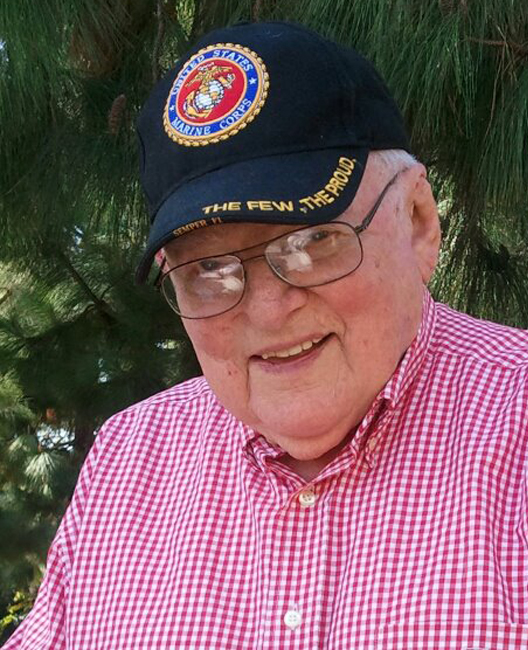Al Hurwitz, of Chilmark, died late in the afternoon of March 24 in Los Angeles. He was 91.
He was a man of boundless enthusiasm and wit who will be deeply missed by all who knew him.
Al and his daughter, Tamara, had walked quickly to beat the closing time clock, arm in arm, to an art gallery. They were refused entry. Al asked the guard if they could be allowed five minutes to view one painting. His last moments were spent sitting before “A Quiet Brook” by William Wendt.
Al was born ready in 1920 in Westminster, Md., the son of immigrant parents and the oldest of four brothers. By the age of 11, his keen interest in art led him to hitchhike the 60 miles from the farm country of western Maryland into Baltimore for Saturday classes at the Maryland Institute College of Art.
At 17, after an attempt to enlist in the R.A.F. in Canada proved unsuccessful due to his tender age, Al traveled south to Nashville. There, intoxicated by the stately colonnades of George Peabody College, Al produced his portfolio and talked his way into a scholarship which included a job in the kitchen and permission to sleep on the roof of the Daughters of the Confederacy dormitory. Painting portraits and lifeguarding at the local YMCA provided pocket money. His brothers soon followed, giving the president of the college the opportunity to remark that “At any time of day, you could look out the window and see a Hurwitz cutting class.”
Following Pearl Harbor, the brothers each enlisted in a different branch of the service. Al chose the Marines based upon their reputation for valor. After failing every gunnery exam given at Quantico, Al washed out of officers’ training school and re-enlisted as a private. He participated in the First Marine Division assault on the island of Peleliu in the South Pacific, a battle in which his division lost one third of its men. The experience of combat remained vivid throughout Al’s life and the friendships formed during wartime were lifelong. His was an enduring passion for friendship. Until last year, he continued to get together for an annual lunch with his remaining kindergarten buddies and eagerly awaited the day’s mail for its reliable exchange of personal letters from far and wide.
After the war, Al entered the Yale School of Drama, where he studied set design and history of the theater, earning a second master’s degree. It was there that he met his future wife, Helen, an acting student. After the Korean War and following his third discharge, Al and Helen moved to New York city to raise their first child and attempt to make a living in the theater together. He produced shows first at Cherry Lane and then the Province-town Playhouse in the Village and was instrumental in launching what came to be known as the Off-Broadway movement.
After a while the life of the theater proved unpredictable for the young family and, finding himself unemployed in Miami, Al took a job as a classroom art teacher, beginning his life’s work in earnest. As he said, “Imagine spending a life with children and art in a place of eternal light.”
After earning his doctorate at Penn State and over the next 50 years, his career included the position of Art Supervisor for Dade/Miami County, Director of the Visual and Performing Arts for the Newton, Mass., Public Schools and Chair of the Dept. of Art Education at MICA. He published 10 books, including the classic text for primary art education “Children and Their Art” revising the ninth edition when he was 89.
He served as president of both the National Art Education Association (NAEA) and International Society of Education through Art (INSEA) lecturing around the world, receiving numerous professional awards, participating in symposiums and keeping his own studio work active until the week of his passing.
First and foremost a teacher, he taught all ages from kindergarten to doctoral candidates and he was never happier than when he was surrounded by children, from Egypt to Russia to the Chilmark School. His wife, Helen, often remarked that the kids liked Al so much because he really was a kid himself. He played the piano, if only in the key of C, and practiced his tap dancing. He particularly enjoyed cooking in his later years, an art which he practiced, as he lived his life, with all the burners on high. Over 58 years of marriage, Helen said he woke her every morning with a song.
His time on the Vineyard was filled with writing and making art, from a series of collages of the imagined exploits of King Kong, landscape and flower paintings as well as preparing an archive of his wartime drawings for the Marine Corps Museum.
When a willing driver could be found, preferably female, errands were created, lunches were shared and stories were told.
Al’s signature farewell of late was to say, “Have the time of your life.”
We will.
He was predeceased by his beloved wife, Helen, in 2010, and his brother, William, in 1999. He is survived by his children and their spouses: Mark Hurwitz and Susan Puciul of Chilmark, Michael Hurwitz and Mami Kato of Philadelphia and Tamara and Bill Pullman of Los Angeles. The apples of his eye, his dearest grandchildren, hold him deeply in their hearts: Maesa, Maria, Jack, Nate, Lewis, Isaac, Bo and Marina.
A local celebration of his life is planned for late spring.
Contributions may be made to The Al and Helen Hurwitz Scholarship Fund, c/o Dr. Karen Carroll, Dean for the Hurwitz Study Center for Art Education @ MICA, 1300 Mt. Royale Avenue, Baltimore, MD 21217.


Comments (3)
Comments
Comment policy »